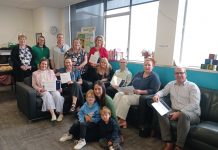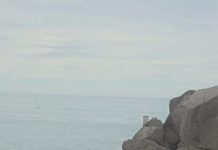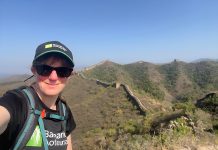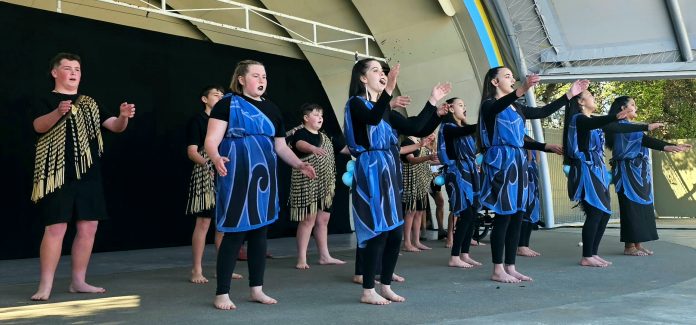
More than 1000 people attended the Ka Toi Māori o Aoraki Flava and Korohi o te Pēpi (Singing of the Babies) festivals last week.
The event was held in a live space for the first time in four years and combined the two festivals to take place over two days.
This year organisers took the festivals, which had previously been held in venues such as the Theatre Royal, to the Caroline Bay Soundshell, another first for the long-running kapa haka and performing arts showcase.
Chairwoman Kathy Campbell said the festivals really gave a chance for tamariki and mokopuna to shine.
‘‘They get to share, to grow, to connect, to excel and just to celebrate their own unique identities, their whakapapa, their culture and what it means to be a part of something so much bigger than themselves.’’
Ten early childhood centres kicked off the festival on Friday morning with the Korohi o te Pēpi, followed by 12 non-competitive primary schools and one noncompetitive high school.
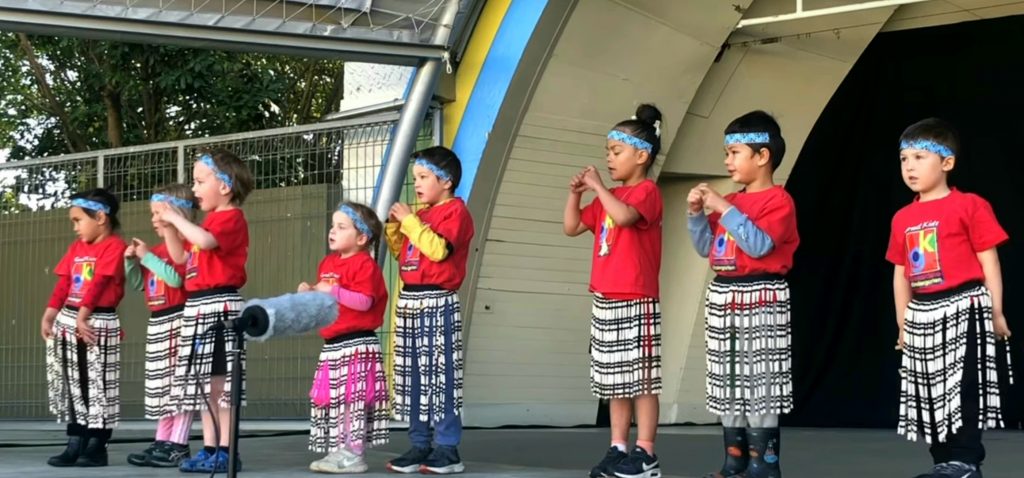
The Saturday was dedicated to the competitive section with eight primary schools and four secondary schools going headto-head for the top awards.
Miss Campbell said the festival was so much more than just singing and dancing as some people thought.
‘‘This experience meets all the cornerstones of te whare tapa whā (health and wellbeing model) in that it builds up our taha hinengaro (emotional and mental wellbeing), our taha wairua (spiritual connections, values), our taha whānau (relationships and connections) and our taha tinana (physical wellbeing).’’
Ka Toi Māori o Aoraki project manager Anahera Home said it was massive for the children to get that tautoko (support).
‘‘It builds them up and gives them that confidence to perform on stage.’’
The concept for the Flava festival originated in 2006 when Kia Piki Te Ora o Te Taitamariki rangatahi identified an interest in developing a local schools competition to promote pride in identity and to showcase their talents and express creativity.
Rakatahi decided the theme for this initial festival would be Flava, signifying the bringing together of people of all flavours in a celebration of culture.
Te Rūnanga o Arowhenua ūpoko Tewera King said it was the one part of the year where everyone could come together to just be a family.
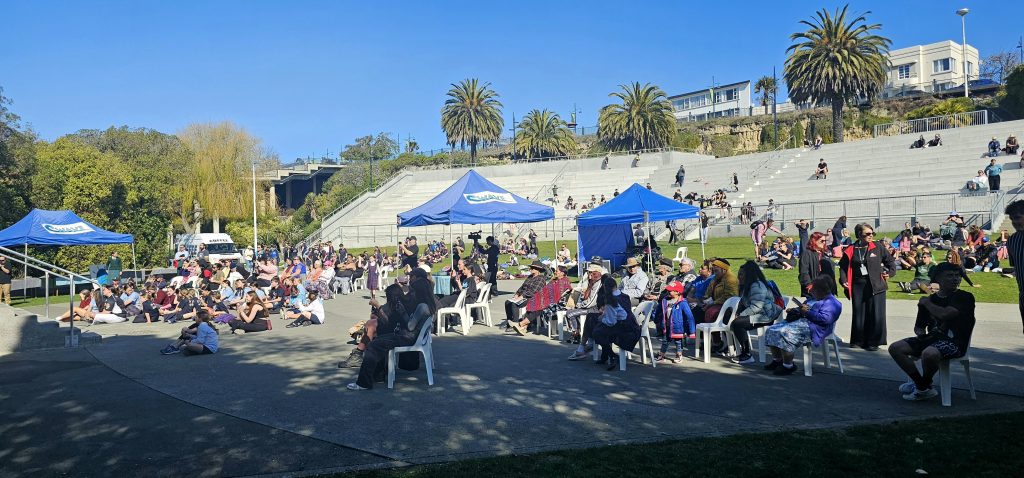
‘‘The kids love participating, the parents and grandparents love watching them and it just lifts everyone in the area.
‘‘It’s so important to the cultural landscape and cultural history of the region.’’
Mr King said it was great to be able to hold the event outside for the first time.
‘‘Back in the day when it was held at the Theatre Royal, everyone was squeezed in. This gives people the chance to move and mix and mingle with other schools and just enjoy each other’s company.
‘‘It gives it a much more relaxed feeling in that sense.’’
Mr King said it was all about children in Timaru learning how to express themselves.
‘‘It’s about learning to perform on a stage, in front of people, build up that confidence and demonstrate their cultural identity of being someone born and bred in South Canterbury.’’
Arowhenua Whānau Services whānau as first navigator Missy King said it was a great opportunity for Māori and non-Māori to come together, celebrate and embrace the culture.
‘‘Everyone can enjoy the festivities. They get to watch others and develop those relationships between schools.
‘‘It’s not all just about kapa haka but how it makes people feel and the uplifting of their wairua (spirit), which is really important.’’
The overall and senior kapa haka award was won by Ashburton College, and the junior kapa haka award was won by Bluestone School.


